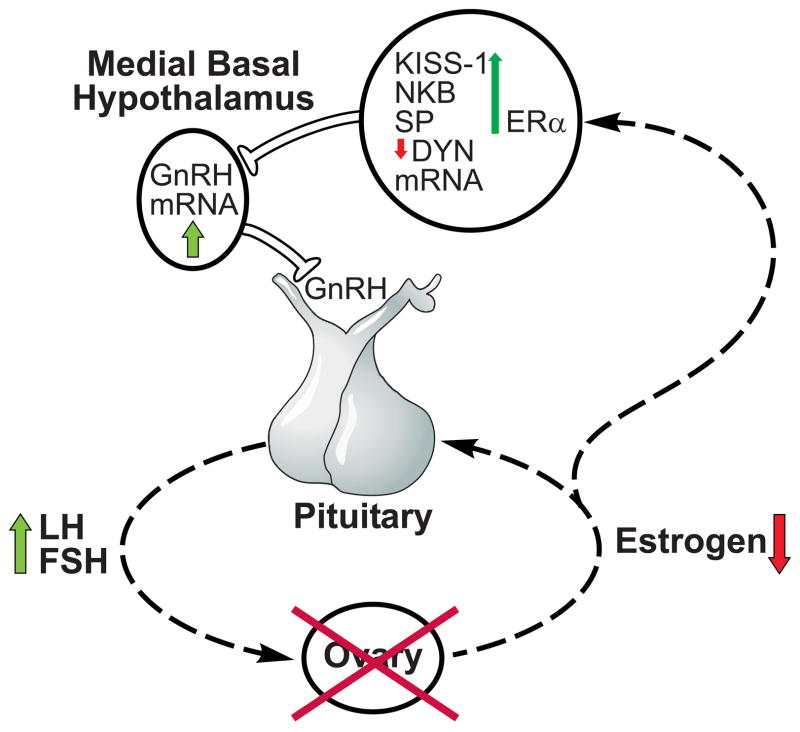Figure 7.
Schematic diagram of neuroendocrine regulation of LH secretion in postmenopausal women. The hallmark of menopause is ovarian aging with follicle depletion resulting in castrate levels of ovarian hormones. Removal of estrogen leads to hypertrophy of a subpopulation of infundibular neurons expressing KiSS-1, NKB, substance P, dynorphin and ERα mRNA in the human infundibular nucleus. Within these neurons, there is increased expression KiSS-1, NKB and substance P gene transcripts and the decreased gene expression of dynorphin mRNA. We hypothesize that stimulatory effects of kisspeptins and NKB, combined with a reduction in the inhibitory effects of dynorphin, ultimately results in increased GnRH gene expression. Increased GnRH secretion leads to the gonadotropin hypersecretion characteristic of the postmenopausal period. These studies provide evidence that neurons expressing KiSS-1, NKB, substance P, dynorphin and ERα mRNA play a role in the regulation of steroid negative feedback in the human. See text for justification of this model.

